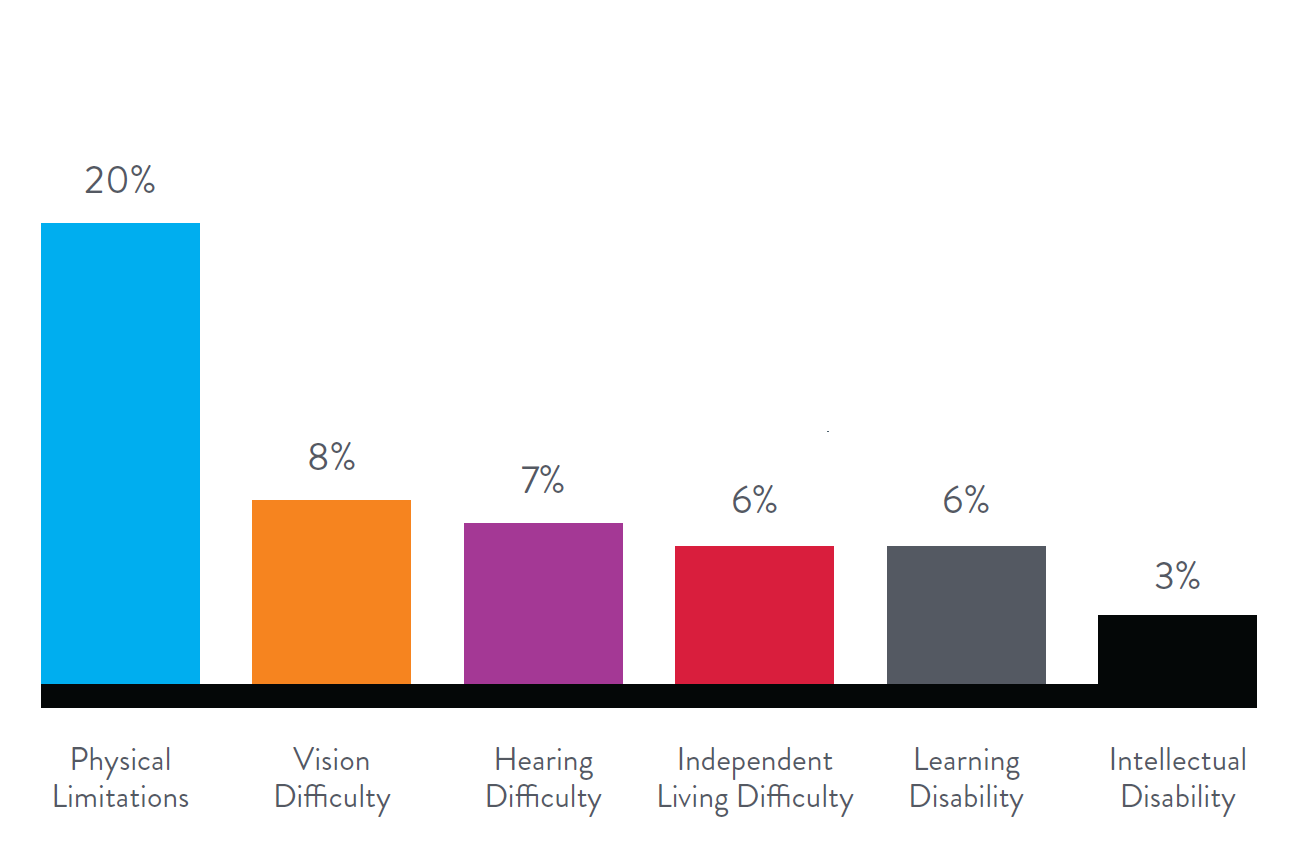More than one in three households have a member that identifies with a disability. Disabilities span across age, race, and gender, so there is reason to believe consumers with disabilities should not differ much from the general population. People with disabilities are not a homogeneous group, as each person has unique skills and abilities which impact their unique desires. Just as ethnic minorities are not one homogeneous group, the same applies to people with disabilities for the same reason.
Through the NielsenIQ’s Omnibus Panel Survey, however, this report reveals a consumer segment that does display atypical behavior. Understanding who these consumers are and what drives their behavior will give marketers and advertisers a glimpse of the opportunity with one of the most present and perhaps most overlooked segments of the U.S. consumer.
Three attributes stand out with consumers in households where at least one member identifies with a disability. They are prevalent, diverse, and loyal.
Percent of U.S. households with a member that identifies with a disability
Nearly 4 million households have a member with an intellectual disability and more than 20 million households have a member with a physical limitation. Households may have more than one member identifying with a disability, and members themselves may identify with more than one disability, but these numbers still represent a large segment of the total population. In our survey, 35% of households had at least one household member that identified with at least one of the six disabilities. This prevalent consumer segment delivers a considerable annual spend.





